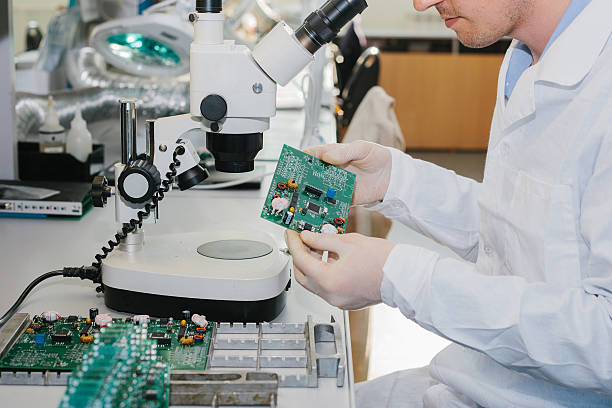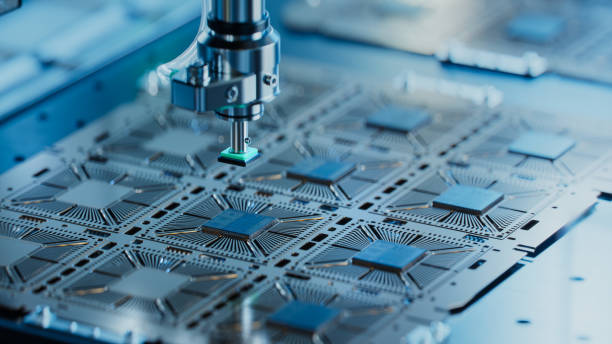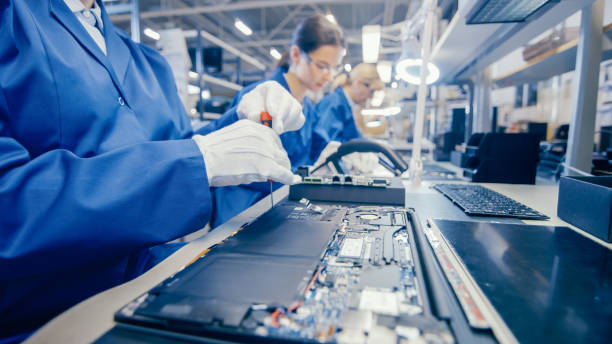Virginia computer manufacturers face unique challenges that can make it tough to keep costs down. Supply chain disruptions, material shortages, and soaring energy prices have hit many industries hard, and manufacturing is one of them. Add to this the struggle to find skilled labor, which is not only in short supply but also increasing in cost, and you have a perfect storm of financial pressure.
The silver lining? Despite these hurdles, production in the U.S. is on the rise, bouncing back as we emerge from the pandemic’s shadows. While we’re moving in the right direction, we need to make reining in production costs a critical focus.
In this blog, we’ll take a closer look at the various expenses associated with manufacturing computer products and explore some strategic approaches to lower these costs.
In this blog, we uncover:
- Production costs
- Leading Virginia computer manufacturers
- 3 Strategies To Lower Production Costs
- How good cybersecurity affects production costs

What Are Production Costs?
Production costs represent the total expenses incurred to bring finished products to life. These costs can be divided into direct and indirect categories, each with its own implications for financial management and operational performance.
Direct Costs
Direct costs are those expenses that can be directly attributed to the manufacturing of computer products. These include:
- Wages of factory workers (direct labor costs) who assemble the components
- Raw materials used in the production process, including:
- Microchips
- Circuit boards
- Casing materials
- Consumables like tools and supplies utilized during production
- Essential overheads for the manufacturing facility, such as:
- Energy costs
- Water costs
Indirect Costs
In contrast, indirect costs are associated with the overall production process but cannot be specifically allocated to individual units. These overhead expenses typically encompass the following:
- administrative salaries
- office supplies
- inventory carrying costs
- general facility maintenance.
Because indirect costs are spread over multiple products, manufacturers must carefully manage these expenses to maintain profitability, as they can majorly impact the overall cost structure of producing computer products. Knowing and controlling direct and indirect costs enables manufacturers to improve efficiency, optimize cash flow, and refine pricing strategies, contributing to a more sustainable operational model.

Top Virginia Computer Manufacturers Leading the Game Right Now
Several companies in Virginia are industry leaders in semiconductor manufacturing for computer parts. While not exhaustive, here are a few:
- BWX Technologies, Inc.: Specializes in nuclear components and services.
- Peraton Inc.: Provides technology solutions and services.
- Rose Computers: Offers computer and networking solutions.
- Commonwealth Technology Group: Provides technical services, including programming and web development.
How to Lower Computer Product Manufacturing Costs
Lowering manufacturing costs in the computer product sector can boost profitability while maintaining product quality. After learning your cost structure, use this guide to create actionable strategies to achieve cost reductions without compromising the output. Manufacturing consultancy services typically implement these intuitive strategies to help your organization gain a competitive edge in the market.
1. Optimize Material Usage
One popular method is nesting techniques, where components are arranged on a sheet or board to minimize waste. This means every piece of material is put to good use.
Also, by investing in advanced Computer-Aided Design (CAD) software that supports nesting, manufacturers can create layouts that maximize the use of components, even allowing for the reuse of scrap pieces in future production runs. Furthermore, integrating IT support for manufacturers can enhance these processes by providing software solutions that streamline production workflows and improve material tracking.
Manufacturing Execution Systems (MES) can track leftover materials, helping manufacturers manage their inventory even more. This means they can recycle remnants in later orders to save money while maintaining high-quality standards.

2. Streamline Labor Costs
To lower labor costs in computer product manufacturing, manufacturers should work on their workforce. In 2022, labor expenses in the computer and electronic products industry hit around $186.663 billion, according to the U.S. Bureau of Labor Statistics.
One approach is implementing cross-training programs, enabling employees to learn multiple roles. This flexibility can help minimize downtime and keep operations smooth. Incorporating automation can ease the pressure on manual labor and help improve productivity.

3. Implement Energy-Efficient Practices
Given its high energy intensity, computer manufacturers must learn to be energy-conscious. For example, producing a desktop computer with a 17-inch CRT monitor consumes approximately 6,400 megajoules (MJ) of energy, with a large portion stemming from the production phase rather than its operation.
To combat these high energy costs, manufacturers can conduct comprehensive energy audits to pinpoint inefficiencies. Investing in energy-efficient machinery and adopting practices such as using advanced cooling systems and optimizing supply chain logistics can substantially reduce energy usage and maximize energy storage.
Also, extending the lifecycle of products through refurbishing or upgrading can help mitigate energy consumption and environmental impact, as the manufacturing phase alone accounts for 81% of a computer’s life cycle energy burden.

Integrate Cybersecurity Into Your Manufacturing Practices With GENEDGE
Computer manufacturers know to always stay mindful of the cybersecurity industry. Surprisingly, manufacturing has become the most targeted sector for cyber attacks, with the average data breach costing a small business up to $105,000. This stark reality highlights that while you’re fine-tuning your production processes, taking proactive measures to guard your systems against cyber threats is just as important.
With Industry 4.0 blurring the lines between operational technology (OT) and information technology (IT), prioritizing efficiency and security becomes vital for sustaining a resilient manufacturing operation. Read more about it in the GENEDGE infographic here. For tailored assistance, request a free assessment today!


